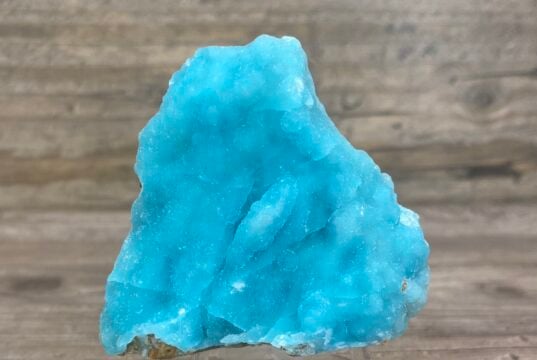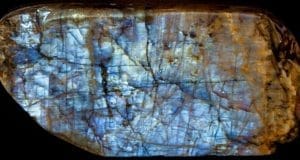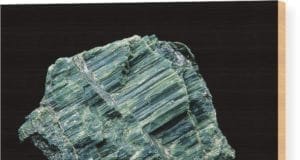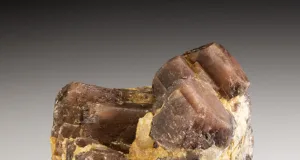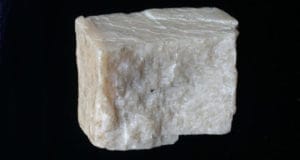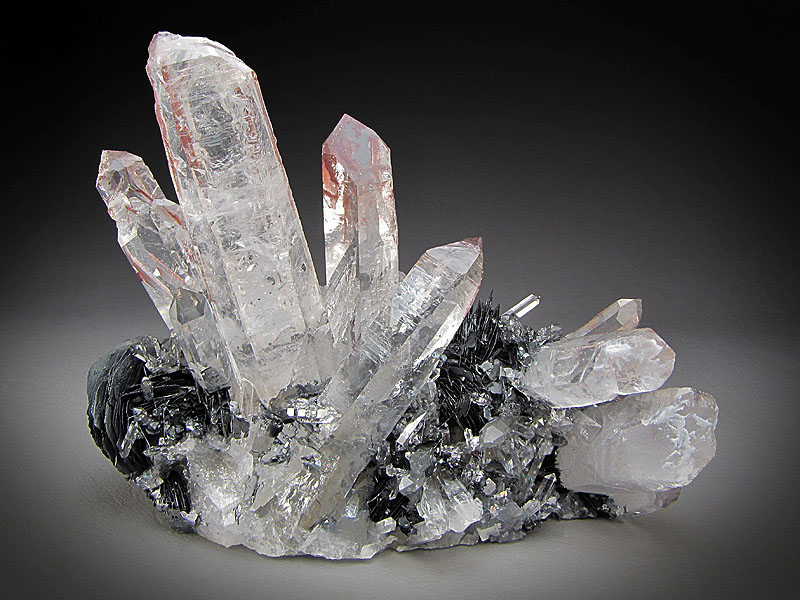Silicates Minerals
This is the most important organization of minerals. Silicates are crafted from metals blended with silicon and oxygen. There are greater silicates than all other minerals put together.The mica at the left is a member of this group.
Augite
The most common pyroxene, augite is named after the Greek word augites, which means “brightness”—a reference to its occasional shiny appearance. Most augite has a dull, dark green, brown, or black finish. Augite occurs chiefly as short, thick, prismatic crystals with a square or octagonal cross section and sometimes as large, cleavable masses. It occurs in a solid-solution series in which diopside and hedenbergite are the end-members. Augite is common in silica-poor rocks and various other dark-colored igneous rocks, as well as igneous rocks of intermediate silica content. It also occurs in some metamorphic rocks formed at high temperatures (1,065°F/575°C or above). Augite is a common constituent of lunar basalts and some meteorites. Notable crystal localities are in Germany, the Czech Republic, Italy, Russia, Japan, Mexico, Canada, and USA. Because it is difficult to distinguish between augite, diopside, and hedenbergite in hand specimens, all pyroxenes are often identified as augite.
Glaucophane
The Glaucophane mineral is named after two Greek words: glaukos, which means “bluish green”; and phainesthai, which means “to appear.” Specimens can be gray, lavender blue, or bluish black. Crystals are slender, often lathlike prisms, with lengthwise striations. Twinning is common. Glaucophane can also be massive, fibrous, or granular. When iron replaces the magnesium in its structure, it is known as ferroglaucophane. Glaucophane occurs in schists formed by high-pressure metamorphism of sodium-rich sediments at low temperatures (up to 400°F/200°C) or by the introduction of sodium into the process. Glaucophane is often accompanied by jadeite, epidote, almandine, and chlorite. It is one of the minerals that are referred to as asbestos. Glaucophane and its associated minerals are known as the glaucophane metamorphic facies. The presence of these minerals indicates the range of temperatures and pressures under which metamorphism occurs.
Anthophyllite
The name anthophyllite comes from the Latin word anthophyllum, which means “clove”—a reference to the mineral’s clove-brown to dark brown color. Specimens can also be pale green, gray, or white. Anthophyllite is usually found in columnar to fibrous masses. Single crystals are uncommon; when found, they are prismatic and usually unterminated. The iron and magnesium content in anthophyllite is variable. The mineral is called ferroanthophyllite when it is iron-rich, sodium-anthophyllite when sodium is present, and magnesioanthophyllite when magnesium is dominant. Titanium and manganese may also be present in the anthophyllite structure. Anthophyllite forms by the regional metamorphism of iron- and magnesium-rich rocks, especially silica-poor igneous rocks. It is an important component of some gneisses and crystalline schists and is found worldwide. Anthophyllite is one of several minerals referred to as asbestos.
Anorthoclase
This member of the sodium- and potassium-rich feldspar group takes its name from the Greek word anorthos, which means “not straight”—a reference to its oblique cleavage. Anorthoclase is colorless, white, cream, pink, pale yellow, gray, or green.
Microcline
Used in ceramics and as a mild abrasive, microcline is one of the most common feldspar minerals. It can be colorless, white, cream to pale yellow, salmon pink to red, or bright green to blue-green. Microcline forms short prismatic or tabular crystals that are often of considerable size: single crystals can weigh several tons and reach yards in length. Crystals are often multiply twinned, with two sets of fine lines at right angles to each other. This gives a “plaid” effect that is unique to microcline among the feldspars.
Sanidine
A member of the solid-solution series of potassium and sodium feldspars, sanidine is the high-temperature form of potassium feldspar, forming at 1,065°F (575°C) or above. Crystals are usually colorless or white, glassy, and transparent, but they may also be gray, cream, or occur in other pale tints.
Orthoclase
An important rock-forming mineral, orthoclase is the potassium-bearing end member of the potassium sodium feldspar solid-solution series. It is a major component of granite its pink crystals give granite its typical color.
Talc
Talc is a naturally occurring mineral known for its softness, smoothness, and ability to absorb moisture. It is a silicate mineral that is composed...
Andalusite
Andalusite is a rock forming minerals and is an aluminium nesosilicate minerals with the chemical formula Al2SiO5.At higher temperatures and pressures, andalusite may convert to sillimanite.andalusite is an aluminosilicate index mineral, providing clues to depth and pressures involved in producing the host rock.
Feldspar Group Minerals
“Feldspar” is the name of a large organization of rock-forming silicate minerals that make up over 50% of Earth’s crust. They are discovered in igneous, metamorphic, and sedimentary rocks in all components of the sector. Feldspar minerals have very comparable structures, chemical compositions, and bodily properties. Common feldspars consist of orthoclase (KAlSi3O8), albite (NaAlSi3O8), and anorthite (CaAl2Si2O8).
Quartz
Quartz is one of the most famous minerals on the earth. It occurs in essentially all mineral environments, and is the crucial constituent of many rocks. Quartz is likewise the maximum varied of all minerals, taking place in all distinct bureaucracy, habits, and colorings. There are more range names given to Quartz than any other mineral. Although the Feldspars as a group are more regular than Quartz, as an man or woman mineral Quartz is the maximum commonplace mineral.
Chlorite
Chlorite is the organization name for approximately 10 related minerals. However, the time period Chlorite may be used each to explain the organization in fashionable, or as a specific term to explain any inexperienced member of the Chlorite institution whose precise identity isn't always realistic to be decided.


























